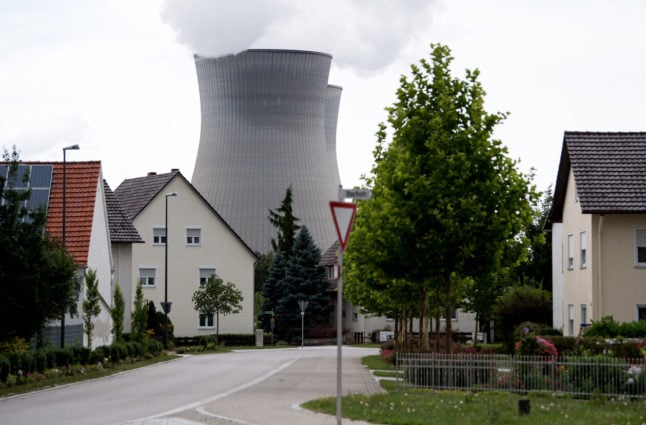A train carrying nuclear waste to France was able to depart on Tuesday despite efforts by Dutch and Belgian anti-nuclear activists – some who were trying to block it by chaining themselves to the tracks.
The train was able to leave Borssele in The Netherlands’ Zeeland province at around 11:00 am (0900 GMT) – three hours behind schedule – and after noon head across the Belgian border, said local police spokeswoman Esther Booth.
She said 33 Dutch activists belonging to Greenpeace were arrested and charged following the protest, which saw them chaining themselves to the tracks from 7:00 am onwards.
“The train is over the border and in Belgium,” she told AFP at 1:30 pm.
Earlier she said: “There were some five blockades, but they have been broken up one-by-one. The protesters were cut loose with saws – for others we had to use a blowtorch.”
Police arrested 33 people, who were taken to the southern central town of Middelburg, where they were held in custody and released after the train passed.
“They have been served with summonses to appear in court. We don’t know what the charges are yet, but I believe it would be either for disturbing the public order or preventing a train from operating,” she said.
Environmental group Greenpeace said in a statement that 10 of its activists had chained themselves to the rails near Borssele. The radioactive waste originated at a nearby nuclear power plant.
Greenpeace’s representative in Belgium said the train crossed the border north of Antwerp.
“The train crossed the border in Essen,” Greenpeace Belgium’s spokeswoman Elizabeth Loos said, adding the action planned by 30 Greenpeace activists “who had taken up position” in Essen, the first town on the Belgian side of the border, had failed bring it to a halt.
“There were many police officers. We could not stay for long,” she said, without giving more details.
The train was crossing Belgium through Ghent in the northwest, despite a legal attempt by its mayor Monday to prevent the train from passing through his city. His attempt was rejected by a court on Monday night.
It was then proceeding to Mouscron, close to the French border.
The activist organisation said the load consisted of three wagons “with an amount of radiation comparable to that released at the nuclear disasters at Chernobyl and Fukushima”.
Greenpeace’s nuclear energy campaign spokesman, Ike Teuling, said the wagonload presented a clear danger to the population living along the railway route to a nuclear recycling plant in La Hague in Normandy.
“If there’s an accident it will be a catastrophe,” Teuling told AFP.
Greenpeace said the trainload of nuclear waste was the first to leave in six years and another 10 trainloads would be leaving in the next two years.
“And this is just the tip of the iceberg,” Teuling said. Greenpeace added despite recycling efforts, only some four percent of the waste would be turned into new nuclear fuel. The rest of the waste would remain radioactive for the next 240,000 years, it said.


 Please whitelist us to continue reading.
Please whitelist us to continue reading.